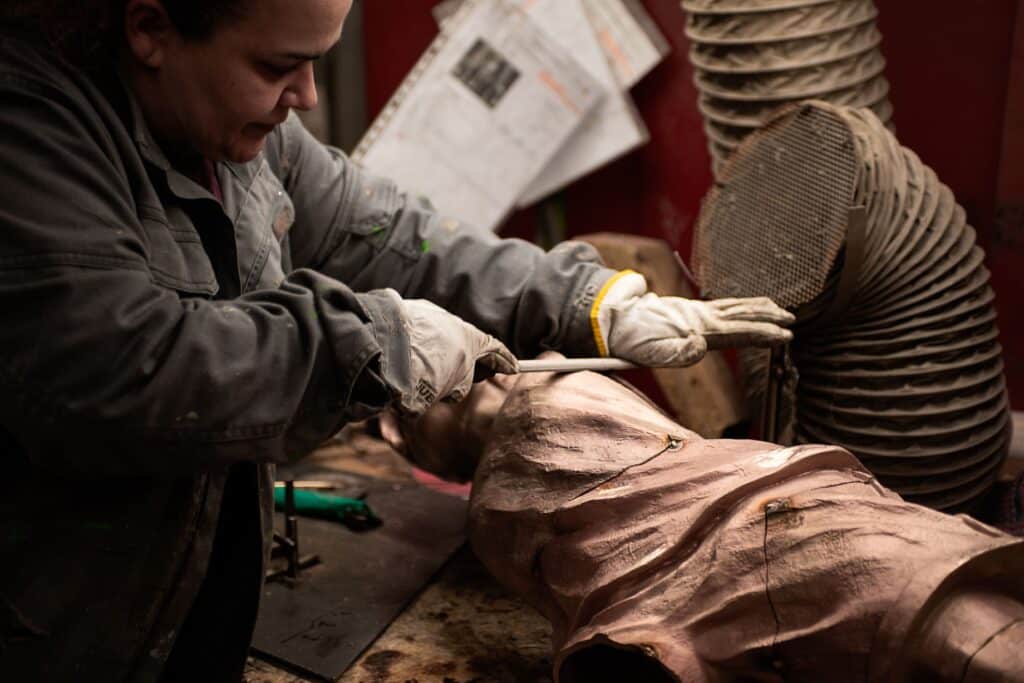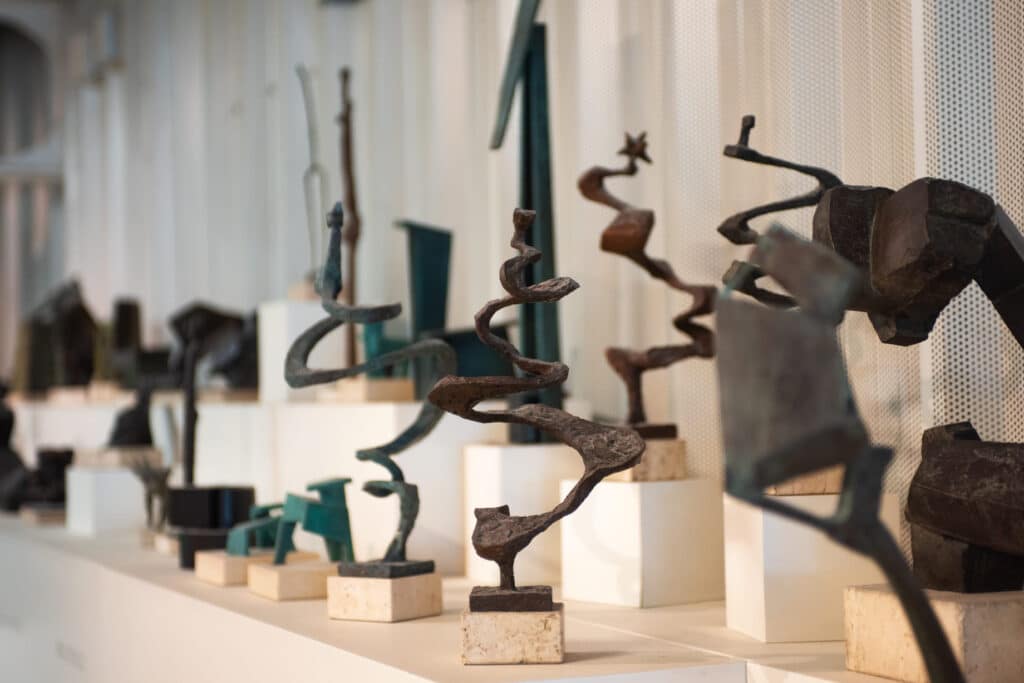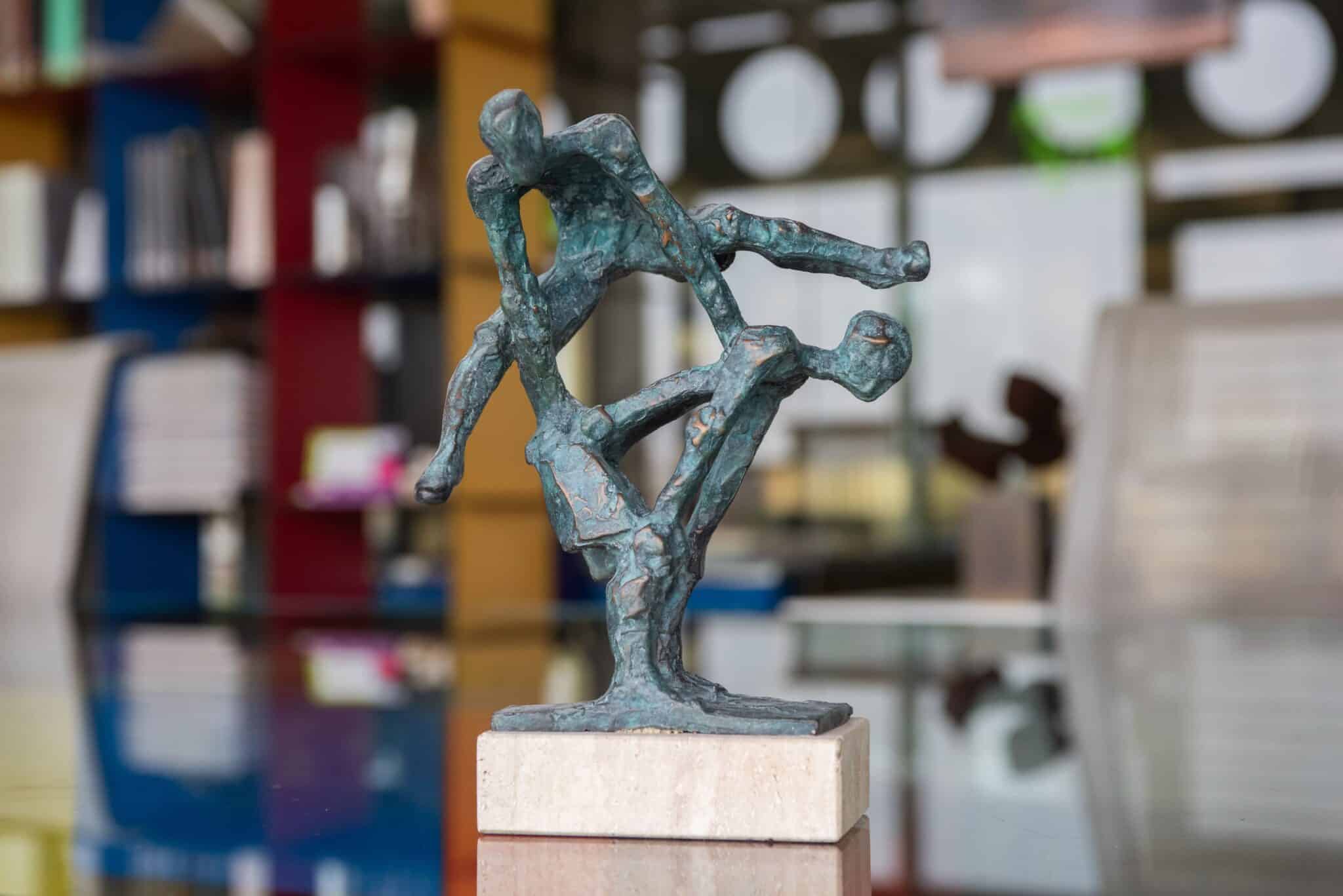Bronze sculptures have captivated mankind since ancient times, embellishing temples, squares, and homes with their golden glow and detailed forms. More than mere decorative objects, these figures represent a perfect combination of art, history and technique.
From the imposing sculptures that adorn public spaces to the small figures that enrich private collections, each piece tells a unique story and becomes a legacy for generations to come. In this article, we will delve into the magic of bronze, its composition, prices and how its history and beauty transcend time.
Why is Bronze the Preferred Material for Sculptures?
Bronze is an alloy composed mainly of copper and tin, although it can often include other metals such as zinc or lead, depending on the desired use and finish. This combination has been the secret behind its durability and strength, as well as its malleability, allowing artists to capture fine and intricate details in each work.
The history of this material dates back to the Bronze Age (around 3300 BC), when the first civilisations discovered its properties and began to use it in tools, weapons and, of course, sculptures.
Today, bronze is still the material of choice for contemporary sculptors. Its versatility allows it to be worked with a wide range of techniques, from lost-wax casting to chiselling. In addition, its warm colour, which varies from gold to brown, creates a sense of luxury and elegance in any space, whether indoors or outdoors.
How is a Bronze Sculpture Made?
At Capa Esculturas, we use casting methods that combine tradition and cutting-edge technology to create bronze sculptures of the highest quality. The process starts with a wax model that is covered with a heat-resistant ceramic mould.
This mould is heated so that the wax melts and comes out, leaving a hollow space inside. The molten bronze is then poured in and solidifies as it cools. Once the metal has cooled completely, the mould is broken to reveal the sculpture. From here on, the sculpture is welded, sanded, polished and patinated to give it its final finish.

Every step in the manufacture of a bronze sculpture is crucial and requires great technical skill. From the choice of alloy to temperature control and the handling of the molten metal, our craftsmen ensure that every detail is perfect, creating sculptures that not only impress visually, but also stand the test of time.
Factors Influencing the Price of Bronze Sculpture
The price of bronze sculptures can vary considerably, depending on many factors. These are some of the elements that determine the value of a work:
- Size and Complexity of Design: Large or intricately detailed sculptures require more material and labour, which increases the price.
- Reputation of the Artist: The prestige of the sculptor is a determining factor in the value of the piece. Works by well-known artists tend to be more expensive due to the demand and history associated with their career.
- Limited Edition: Sculptures in limited editions tend to have a higher price due to their exclusivity and scarcity.
- State of Conservation and Period of Creation: Antique bronze figures are valuable not only for their antiquity, but also for the historical and cultural context they represent.
At Capa Esculturas, we offer a wide variety of sculptures, from small bronze figures ideal for new collectors, to monumental pieces for public and private projects.Our catalogue is designed to satisfy both those looking for an affordable work of art and those looking for a high value investment in a unique work.
Bronze in the History of Art
From pre-Columbian cultures to the Renaissance and contemporary sculpture, bronze has been a favourite medium of expression for many artists. In the ancient world, bronze sculptures depicted gods, heroes and mythological figures, as can be seen in Greek and Roman statuary.
Throughout history, this material has been used to commemorate historical events and pay tribute to important figures.The iconic ‘The Auriga of Delphi’, Donatello’s reliefs or Alberto Giacometti’s figures are just a few examples of the mastery of bronze in art.
How to Care for and Maintain Bronze Sculptures?
Proper maintenance of bronze sculptures is essential to preserve their beauty and value over time. Although bronze is a resistant material, continuous exposure to humidity and dust can affect its surface, producing unwanted stains or patinas. To preserve a bronze sculpture:
- Regular Cleaning: Use a soft cloth to remove dust and dirt.Avoid abrasive cleaning agents that may damage the surface.
- Wax application: Apply a thin coat of special bronze wax at least once a year to protect the patina and give it a shiny finish.
- Avoid Exposure to the Weather: If the sculpture is outdoors, it is advisable to protect it from rain and excessive humidity to avoid oxidation of the copper.
- Annual Inspection: Check the sculpture for cracks or discolouration. If any cracks or discolouration are detected, it is advisable to consult restoration experts.
Why Choose Capa Sculptures?
At Capa Esculturas, we are proud to offer unique pieces that reflect the passion and skill of our artisans. We use the highest quality bronze to ensure the durability and beauty of each of our works. Our commitment to excellence is reflected in every detail, from the choice of alloy to the final finish. Whether you are looking for a custom sculpture or a classic piece, our team is ready to turn your ideas into tangible art.

In short, bronze sculptures are not just decorative pieces; they are a testament to human ingenuity and creativity. Whether to beautify a space or to collect, each bronze sculpture is an investment in beauty and culture that endures through time.
If you are interested in acquiring a bronze figure or learning more about our casting techniques and processes, do not hesitate to contact us.At Capa Esculturas, we are here to help you discover the true value of bronze art. You can see the sculptures in our gallery by clicking here.

